What's Tested on the SAT Writing Section? Grammar and Questions
Author
Hartwell
Date Published

If Isaac Asimov were to discuss the SAT Writing and Language section, he might say that one must think and type swiftly. With just 35 minutes to complete 44 multiple-choice questions, working both efficiently and effectively is essential to achieving a high score.
Let’s take an in-depth look at the Writing and Language section, so you’ll know exactly what to expect.
Format of the SAT Writing Section
The Writing and Language section constitutes the second part of the SAT. Combined with the Reading section, this forms your Evidence-Based Reading and Writing score (often referred to as the verbal score).
This section lasts 35 minutes and consists of 44 multiple-choice questions. Every question is tied to a passage, with a total of four passages followed by 11 questions each. The passages are taken from four content areas: Careers, Social Studies, Humanities, and Science.
- Career passages explore trends or significant debates within professional fields such as medicine, technology, or business.
- Social Studies passages focus on disciplines like sociology, history, anthropology, psychology, or political science.
- Humanities passages highlight topics such as literature, art, music, theater, or dance and may feature works by authors or discussions of artistic trends.
- Science passages delve into subjects including earth science, biology, chemistry, or physics.
Unlike the prose you might encounter on other tests, every passage in this section is nonfiction. They focus on explanations or arguments, and some passages may even include an accompanying visual element, such as a table, graph, or chart.
What you should know is that these passages contain deliberate errors. These mistakes may involve punctuation, word choices, sentence structure, or logical organization. The multiple-choice questions will pinpoint specific sections of each passage, asking you to identify whether something needs improvement and, if so, how to revise it.
Overall, this part of the SAT evaluates your editorial abilities. Let’s explore how it does this.
Writing and Language: Assessing Your Editorial Skills
The Writing and Language section challenges you to analyze passages filled with errors and improve them. Your task begins with identifying whether an issue exists. If it does, you must select the best answer to fix or enhance the sentence, paragraph, or passage. To excel, you’ll need a strong understanding of grammar rules, organizational strategies, and the appropriate use of transitional devices.
According to the College Board, questions in this section cover four main skill areas: Command of Evidence, Words in Context, Expression of Ideas, and Standard English Conventions.
A little over half of the questions focus on the first three skill areas and involve developing, organizing, and refining ideas using precise and effective wording. The remaining questions test your knowledge of Standard English Conventions, such as sentence structure, grammar, and punctuation. These are more detail-oriented and technical.
Let’s break down these skill areas further, using an official sample to illustrate key question types.
1: Command of Evidence
Command of Evidence questions assess your ability to improve how a passage conveys information or meaning. These questions often require you to add a supporting detail, an introductory sentence, or a conclusion to enhance a passage’s impact and clarity.
In addition, these questions ask you to provide reasoning behind your revisions—your “evidence” for making the change. For instance, a sample question might ask you to strengthen a paragraph by providing a more compelling connection between its ideas and explaining why your chosen revision is most effective.
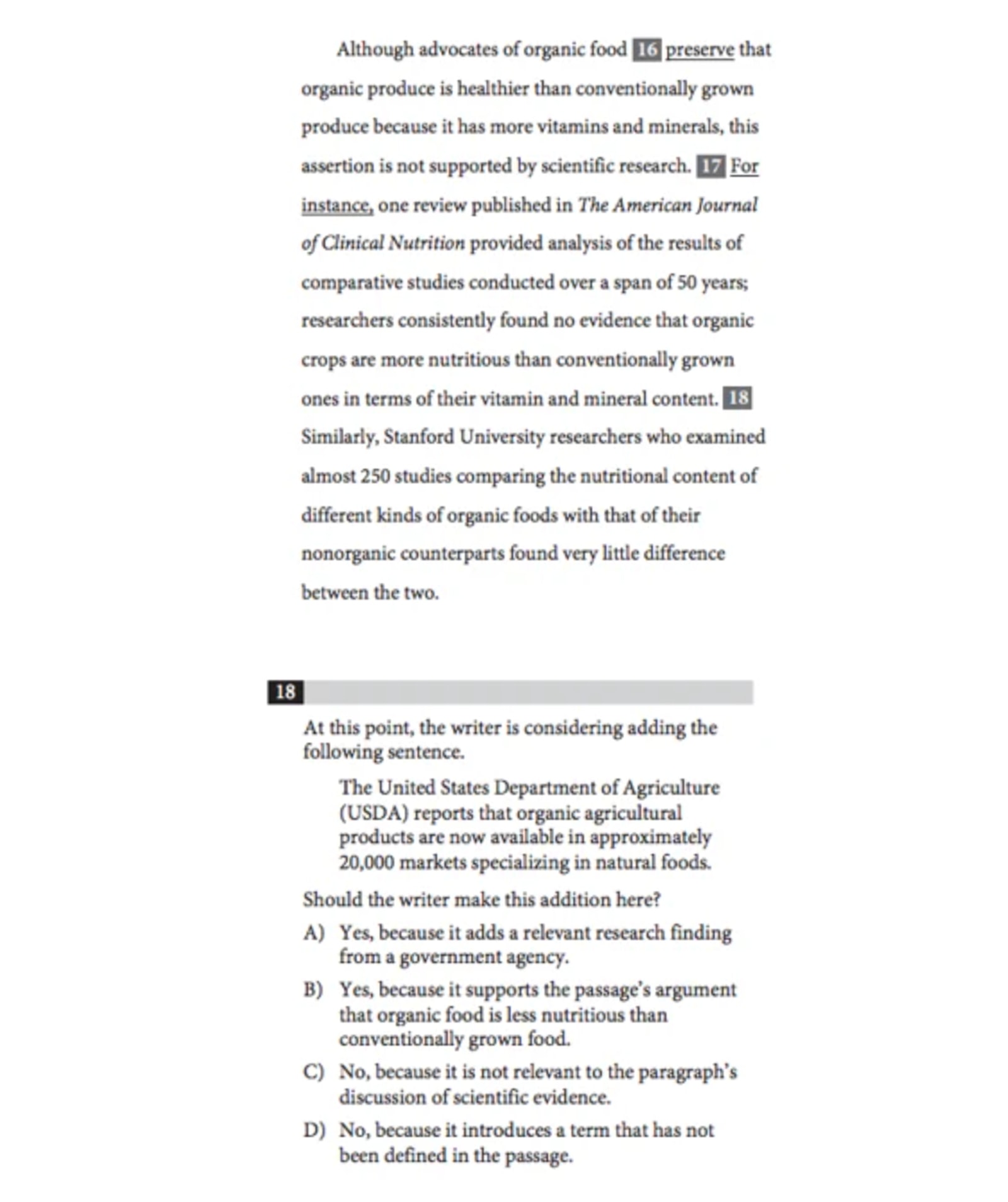
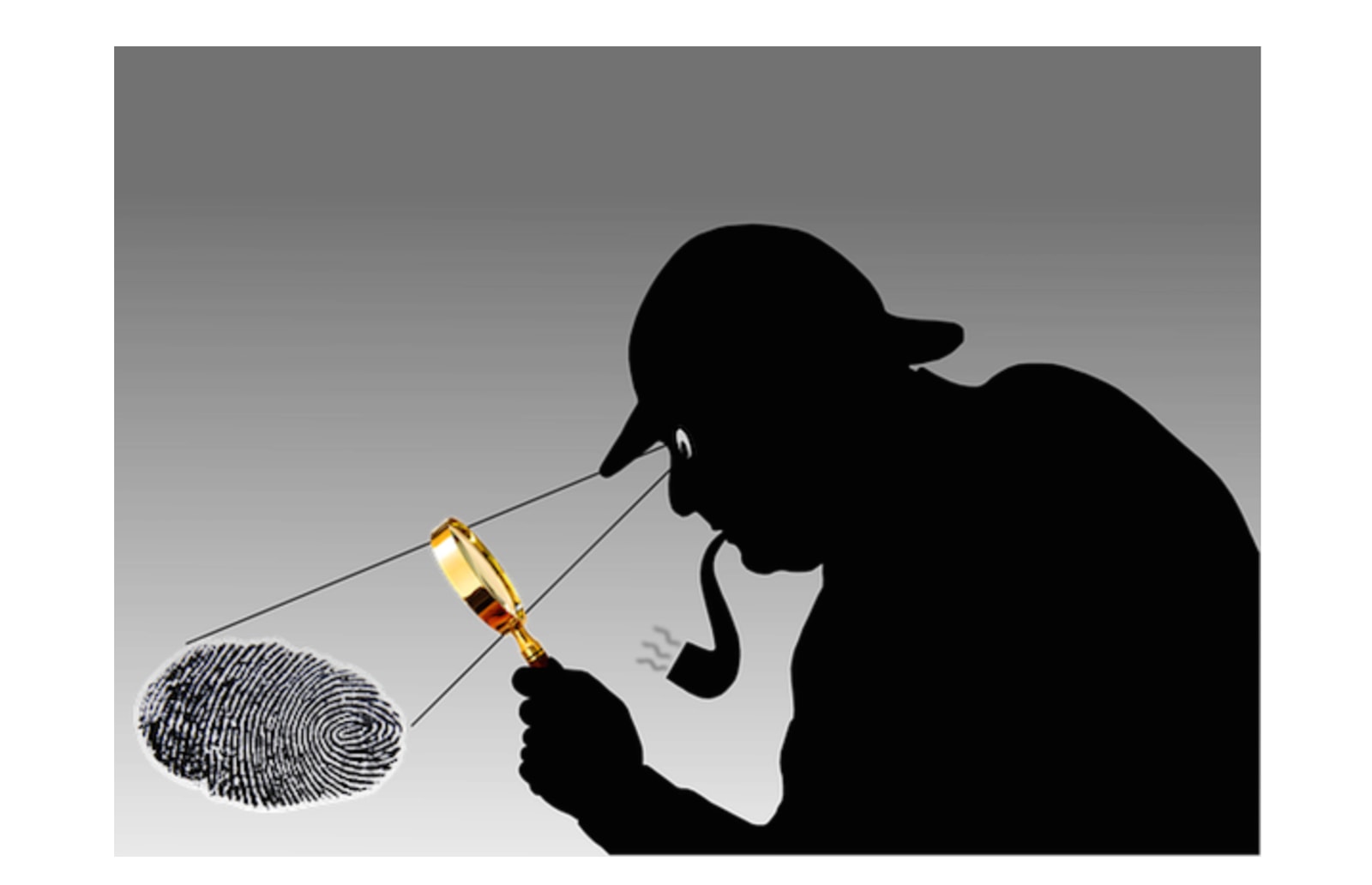
2: Words in Context
Words in Context questions are more specific and precise than Command of Evidence questions, as they focus on selecting or replacing a particular word. These questions may ask you to substitute a word that doesn’t fit its context or to choose a term that better suits the tone or meaning of the passage.
The vocabulary involved is not advanced, but it often includes words that are easily confused, such as “outperform,” “outweigh,” and “outdo,” or words that carry different meanings depending on their usage.
Like many Writing questions, Words in Context questions often offer the option “No Change.” Before making any replacements, you must first determine whether there’s actually an issue with the current word.
Here’s an example of a Words in Context question typically found in the SAT Writing and Language section.

3: Expression of Ideas
As their title suggests, Expression of Ideas questions deal with the clarity and effectiveness of a writer’s message. For instance, you might need to rearrange sentences to improve the logical flow, delete a sentence that disrupts coherence, or rephrase a section to make the argument stronger and more impactful.
These are what we call “big picture” questions, as they involve higher-level revisions to enhance the passage’s overall organization or meaning. Here’s an example of an Expression of Ideas question that you might encounter on the SAT.
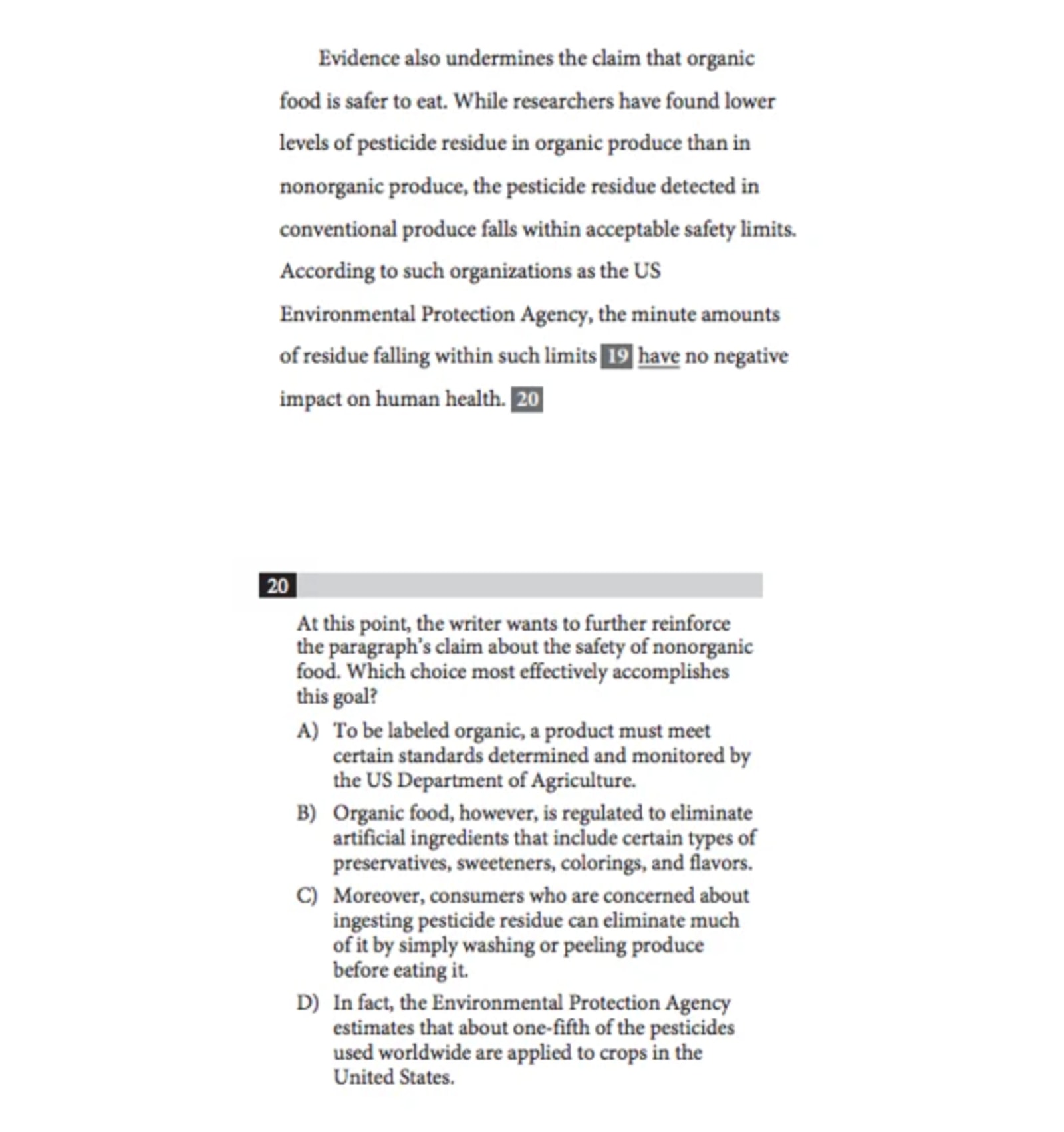
4: Standard English Conventions
Approximately half of the SAT Writing questions fall under the Standard English Conventions category. These are grammar-focused questions that test your knowledge of sentence correctness, structure, and punctuation rules.
Such questions may ask you to correct errors related to verb tense, subject-verb agreement, pronoun usage, parallel construction, or punctuation marks like commas and apostrophes. For example:
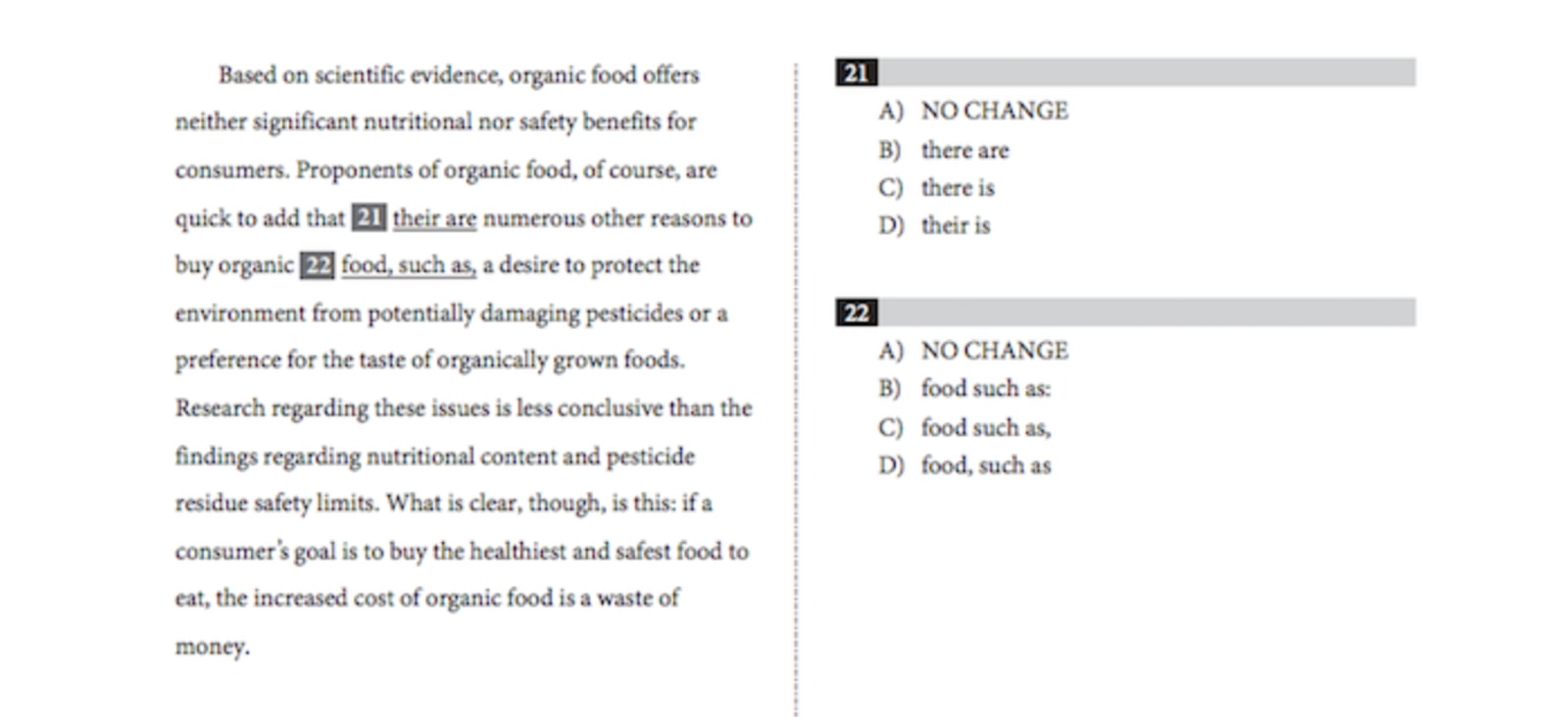
- One question might ask whether to use “there” or “their” in a particular sentence.
- Another might test your understanding of comma placement or require you to revise the subject-verb agreement in a phrase.
These types of questions evaluate how well you can identify and address the intricate mechanics of written English.
Extra Question Type: Data Interpretation
In addition to the four main skill areas—Command of Evidence, Words in Context, Expression of Ideas, and Standard English Conventions—there is another question type worth noting. About 2% to 4% of the questions in the SAT Writing and Language section focus on data interpretation.
At least one passage in the Writing and Language section is paired with a visual representation of data, such as a chart, graph, or table. These graphics are directly related to the content of the passage. However, the description in the passage might be inaccurate or unclear.
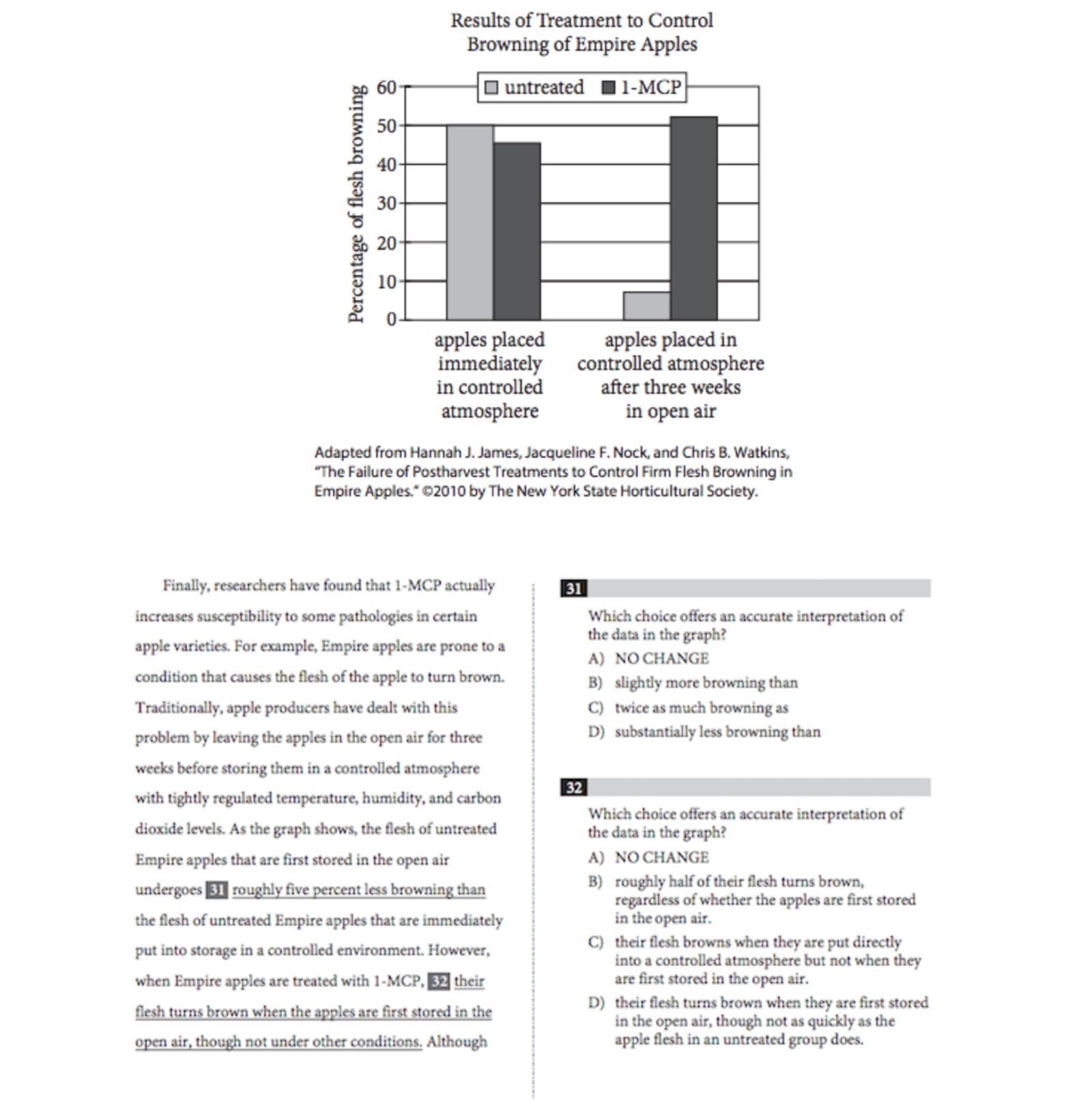
Data interpretation questions may ask you to:
- Revise an incorrect description of the data.
- Add a sentence that references the data to strengthen an argument in the passage.
These questions are unique because they may require you to flip between the visual data and the passage on different pages. By contrast, other types of questions point directly to specific lines or sections within the text they reference.
Now that you understand the key skills and question types you’ll encounter in this section, let’s move on to some essential study strategies to prepare for the SAT Writing and Language portion effectively.

How to Study for the SAT Writing and Language Section
The SAT Writing and Language section challenges you to think like an editor. It presents flawed passages, and your task is to improve them. You might need to correct a word, fix punctuation errors, rearrange ideas, or add sentences for better cohesion and flow.
Though many editorial skills come from years of reading and writing, there are concrete steps you can take to prepare specifically for this section. Here are six study tips to help you achieve your desired score:
Master Core Grammar Rules
Nearly 50% of the questions in the Writing section test your knowledge of grammar, usage, and punctuation. While grammar is not the only aspect of the SAT Writing section, it is a central focus. Therefore, it’s vital to build a strong understanding of the most commonly tested grammar rules, such as:
- Subject-verb agreement
- Parallel structure
- Reducing wordiness
Knowing these rules helps you recognize what each question is testing instead of relying on instincts about what “sounds” or “looks” correct. A solid grasp of grammar and syntax will allow you to approach these questions with both accuracy and confidence.
Learn Punctuation Rules
Unlike the older SAT, the modern test includes punctuation-related questions. You may encounter errors involving commas, apostrophes, semicolons, colons, or periods. You might also need to:
- Combine phrases into a single, cohesive sentence.
- Break up a run-on sentence into two correctly punctuated sentences.
To master punctuation questions:
- Study the most commonly tested punctuation rules.
- Practice applying these rules with official SAT questions.
Start by reviewing each rule in isolation and pairing it with practice exercises. Then, challenge yourself further by taking mixed practice tests where questions appear in random order. This ensures that you can quickly recall the correct rule under pressure.
If you don’t understand when and how to use punctuation like a semicolon, these questions can be tricky. However, once you’ve mastered the rules, they become straightforward and manageable.
Read Nonfiction Essays and Newspaper Articles
All Writing and Language passages on the SAT are nonfiction. They require you to work with explanatory or argument-based texts, which differ from fictional works like The Great Gatsby or The Crucible , which are common in many English classes.
To prepare for this, practice reading:
- Nonfiction essays
- Opinion or editorial pieces
- News articles
As you read, adopt an analytical mindset:
- Circle transitional words or phrases to understand how ideas are connected.
- Take notes in the margins about the structure, flow, and reasoning used by the author.
Deconstruct the text as you would if you were an editor. Identify what makes a strong argument or determine what could improve the clarity and impact of weaker passages. This mindset mirrors the skills tested on the SAT Writing and Language section, where editing and revising are your primary objectives.
Pay Close Attention to Feedback on Your Writing
Do your teachers give you feedback on your essays or other written assignments? If so, don’t simply focus on the grade and ignore the comments or corrections. These comments are invaluable in understanding how to improve your writing and develop effective editing skills.
Take the time to review each suggestion carefully, and if there’s something you don’t understand, don’t hesitate to ask your teacher for clarification. Additionally, you could request feedback on a specific piece of writing, especially if your goal is to refine your skills further.
Another excellent way to grow as a writer is to partner with a peer for mutual feedback. Acting as an editor for others allows you to develop your ability to identify strengths and weaknesses in writing. Whatever the source of feedback, be it from a teacher or a peer—embrace it. Incorporating this feedback will not only improve your writing but also help you excel in the SAT Writing and Language section, where precise editing is key.
Develop an Understanding of Multiple-Meaning Words
Some of the questions in the SAT Writing section fall into the Words in Context category. While none of the terms you’ll encounter are obscure or advanced, they are often middle-level words that can take on different meanings depending on the context.
Studying words with multiple meanings will aid you in both the Writing and Reading sections of the SAT. Don’t limit yourself to vocabulary lists—focus instead on how words shift meaning based on their use in sentences or passages. Pay attention to context clues that can help clarify these meanings. This combination of vocabulary understanding and contextual analysis will set you up for success on Words in Context questions.
Practice Interpreting Data from Graphics
A small portion of the Writing and Language section will involve interpreting data from visual elements, such as charts, graphs, or tables. These graphic analysis questions require you not only to understand the data but also to apply it. For example, you may need to:
- Identify and correct a passage’s misrepresentation of the data.
- Add a sentence that accurately reflects what the data conveys.
To strengthen your skills in data interpretation, draw upon studies in your Science and History courses or work through SAT practice questions. You could even use questions from the ACT Science section to practice analyzing data (though the SAT Writing graphics questions aren’t restricted to science-related topics).
Become familiar with a variety of graphical formats, such as pie charts, line graphs, scatterplots, bar graphs, and tables. While data interpretation may not be the first thing you associate with the SAT Writing section, it’s a crucial part of your preparation. Honing this skill alongside your editorial abilities will leave you better prepared to tackle these questions confidently.
SAT Writing and Language: Key Points to Remember
The SAT Writing and Language section is your second section on the SAT. It consists entirely of passage-based, multiple-choice questions and measures your ability to act as an editor. Your task is to improve flawed writing by fixing errors in grammar, punctuation, sentence structure, and overall organization.
To prepare for this section, you should:
- Study grammar, punctuation, and usage rules.
- Read and write regularly, analyzing the structure, flow, and clarity of different texts.
- Embrace feedback from teachers or peers to develop your skills further.
This section accounts for half of your Evidence-Based Reading and Writing score; the other half comes from the Reading section. By mastering the skills tested and using strategic preparation, you’re well-equipped to reach your target verbal scores.
The key to succeeding in the Writing and Language section is a combination of technical knowledge and critical thinking. With consistent practice and an analytical focus, you’ll be on track to achieve your SAT goals.
Related Posts
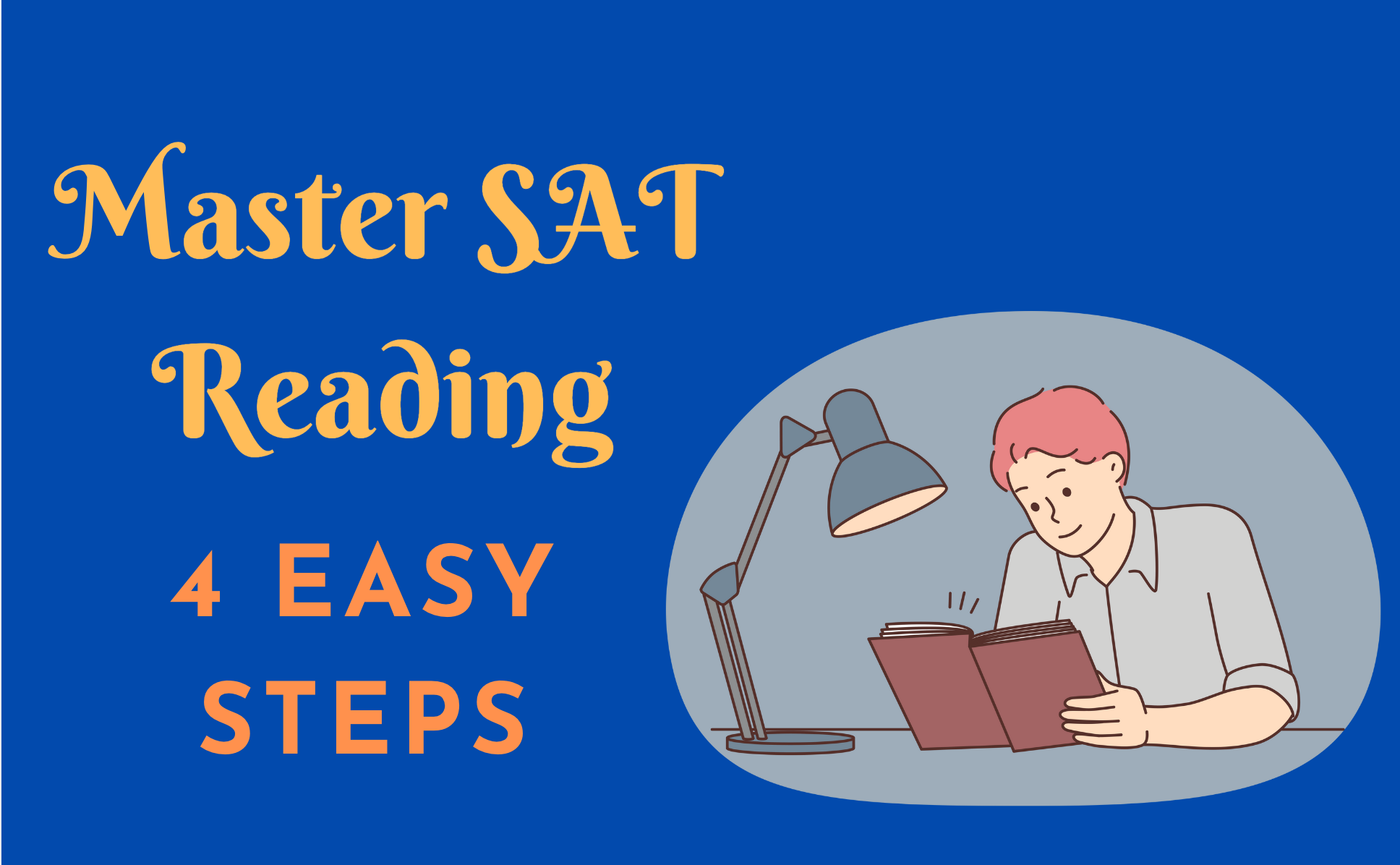
Struggling with SAT Reading? Learn a proven 4-step method to tackle passages effectively, avoid traps, and improve your test score!
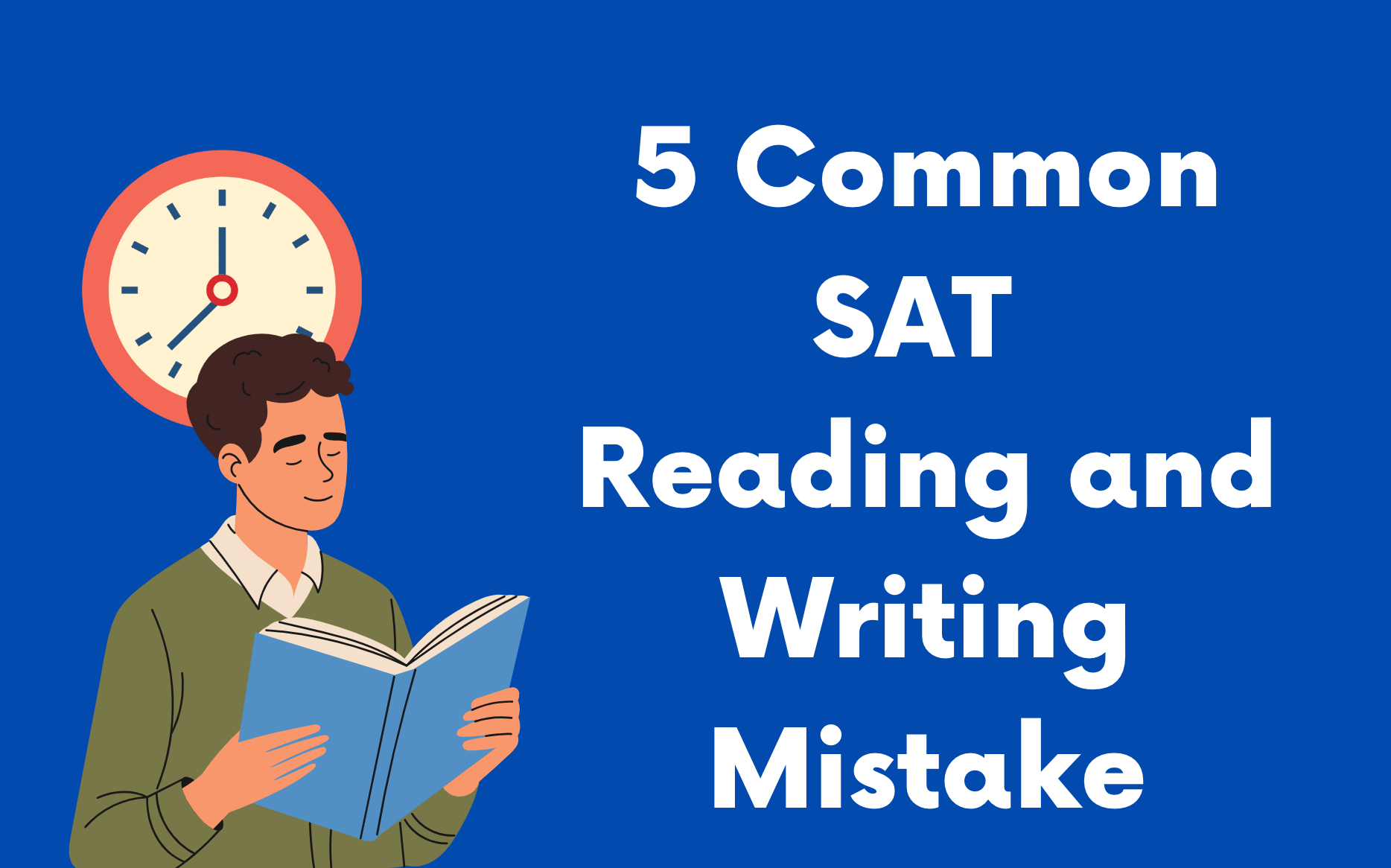
Struggling with the Digital SAT Reading & Writing section? Discover 5 common mistakes students make and actionable tips to boost your score!